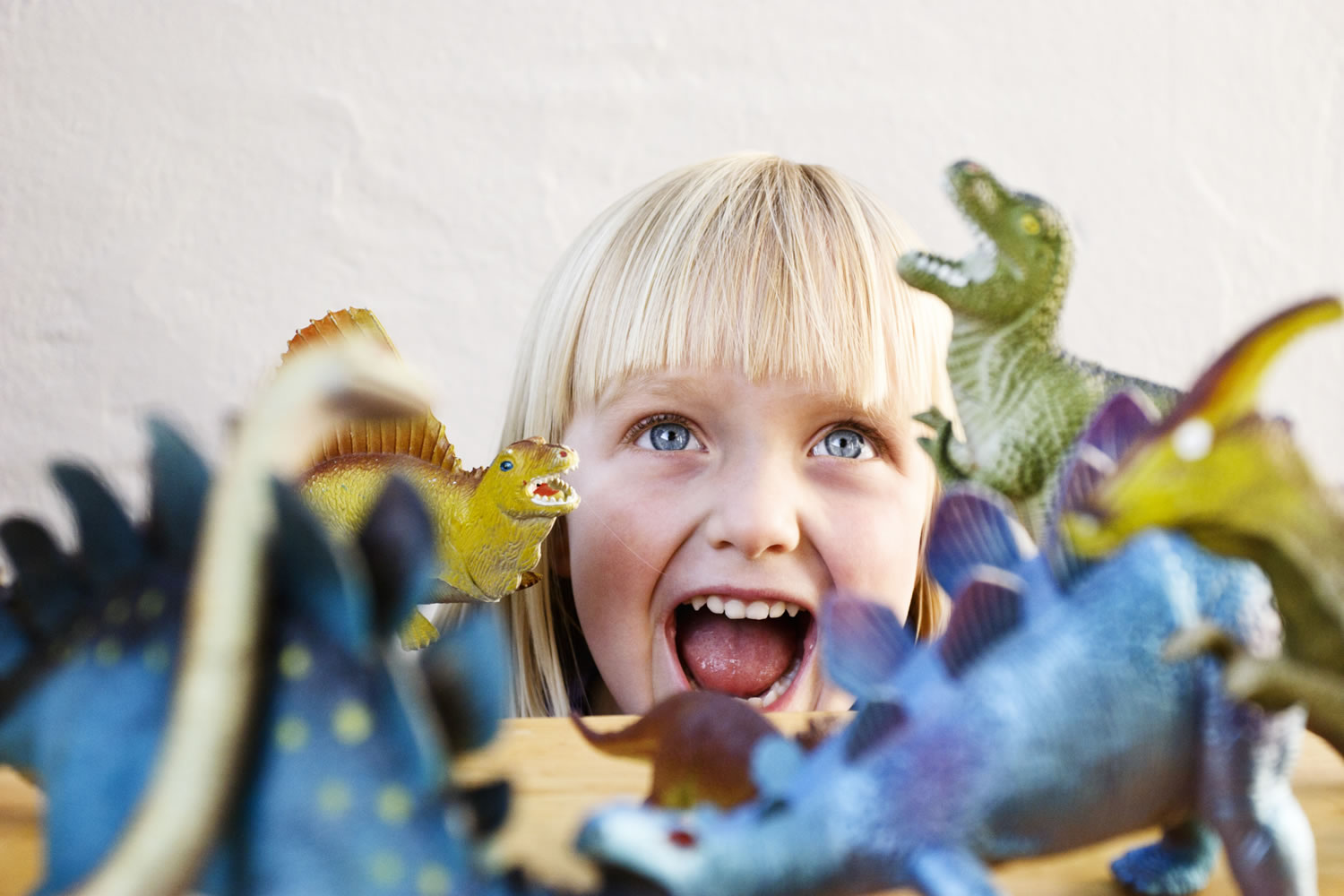The magic of small world play in early learning
Published on Wednesday, 22 September 2021
Last updated on Monday, 20 September 2021

Little people have big imaginations, and small world play is an enormously beneficial way to tap into this creativity at child care and at home.
Basically, small world play involves your child placing little toys (like vehicles, furniture, animal figurines and peg people) into a miniature setting, then enacting different scenes and situations using these objects.
Your child might be in charge of a farm, oceanarium, construction site or fairy forest (complete with dinosaurs!), and as they create a scenario, these miniature worlds open up substantial opportunities to think, act and interact.
Today, we explain why small world play is so wonderful for your child and share ways that early childhood education (ECE) services can set up this great little learning experience.
What are the benefits of small world play?
Small world play can be an individual or collaborative activity, and it has a whole range of upsides for under fives:
- Physically, your child’s fine motor, spatial awareness and coordination skills get a work-out as they place little objects into particular arrangements, build whole scenes, and get to grips with different sensory elements (e.g. wood, plastic and water).
- Emotionally, small world play allows your child to express themselves by acting out real world scenarios or re-creating memorable moments or stories they know.
- They can explore how they feel about certain people and situations (e.g. by playing out their worries through a figurine), and collaborative play encourages them to think about the feelings of their peers.
Different emotions can be acted out in a safe way (e.g. when their fairy figurine is terrified of the angry dinosaur), and looking at situations through the eyes of a fairy, or fellow classmate, increases your child’s empathy and emotional understanding.
- Cognitively, small world play helps your child to understand the real world.
They learn about cause and effect, as one small action leads to a reaction, and there are opportunities for reasoning and problem-solving (e.g. when your child has to work out how to fit all the animals in the fenced area).
Small world play can teach littlies about community life and rules (e.g. when a figurine stops at a train crossing), and there are language skills at play as your child explains and chats with playmates.
Creativity and imagination is needed to build and act out each small world scenario, and educators can inspire new ways of playing by suggesting a different scenario, joining in the play as another character, or coming up with problems or solutions for children to ponder.
Numeracy skills can also be developed when kids are asked to count out the shells in an underwater world, or see how many pebbles can be loaded into a digger’s bucket.
- Socially, small world play as a group also encourages sharing, communication and negotiation (as different set-ups and roles are worked out), and all of the above benefits combine to make small world play a great ECE activity that captures children’s imagination and interest for solid blocks of time.
How do ECE services set up a small world scene?
There are loads of different ways to play, with themes to suit every child’s interests, and a small world can be bought ready-made or created from objects and materials already on-site (e.g. a tub containing sandpit sand, pebbles and figurines instantly becomes a beach).
To set up a small world:
- Educators need to decide on a theme, with children’s input. The theme could be inspired by a storytime book, a parent’s occupation, or a child’s particular interest.
- It’s then time to gather the materials. A box, tub or tray is needed to contain the small world, along with things like figurines, fences, toy vehicles and sensory materials (e.g. play dough, artificial grass, pebbles, pine cones and shells).
It’s very important that the objects are age-appropriate and not choking risks for under threes. This means big, simple objects are good for young children, and preschoolers can work their magic with smaller, more interesting items. - Educators then stand by to help with the set-up, supervise play, and promote children’s learning. They’ll tailor their input to each child’s age, disposition and ability (e.g. a less confident child might need their educator to show them how it’s done, and a confident older child might have lots of questions!)
What are some great ideas for small world play?
There’s a wide world of themes on offer, but for starters, here are six engaging ideas for child care or home:
- A sensory farmyard small world, with animal figurines and straw, water, soil, greenery and a tub of split peas and rice for the animals to graze on.
- A rainforest small world, with a printed jungle background, swinging vines and a sparkly cool stream.
- A construction site small world, with wooden ramps for diggers to go down and dried pasta to scoop up. Alternatively, roll out a play dough road for the big rigs.
- A beach small world, with rice sand, fabric sea and a happy family.
- A cardboard box town, with roads drawn onto the base of a big cardboard box, wooden block buildings, vehicle toys, and a baby or toddler to jump into the action!
- A fairy garden small world, with figurines, fencing, flowers, fake grass or moss, and the option of filling a low, wide flowerpot with soil. Twinkly, flameless tea lights add an especially magic feel at home, and whichever world your child creates and enacts, the only limit is their imagination!
Additional references
Further reading
Related Articles

Kids need freedom from play restrictions to develop
The importance of providing opportunities for unstructured play for children in care.

It's A Small World: The Importance of Small World Play
How educators can facilitate small world play in early learning settings.
